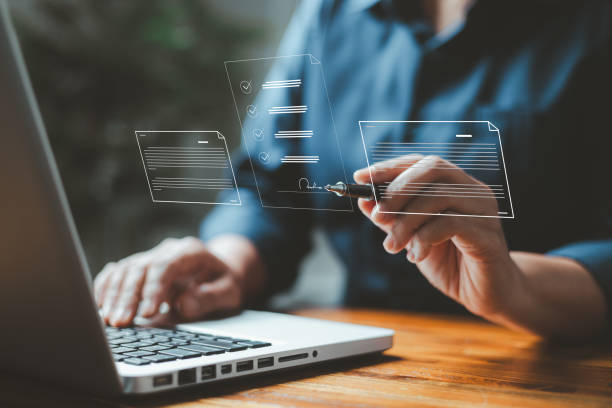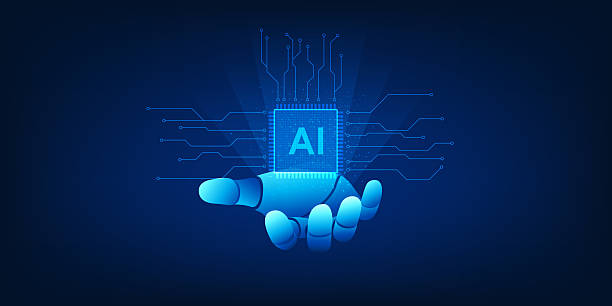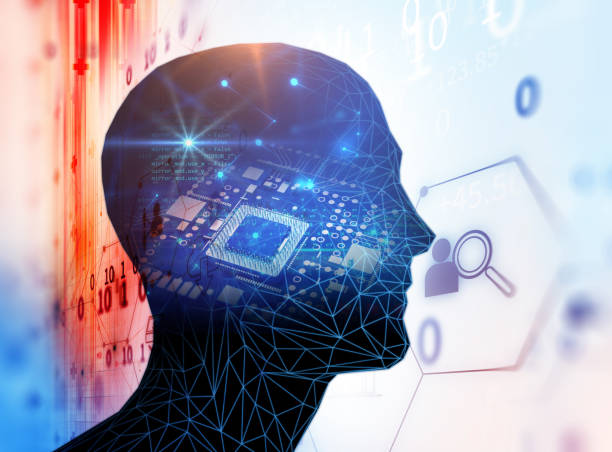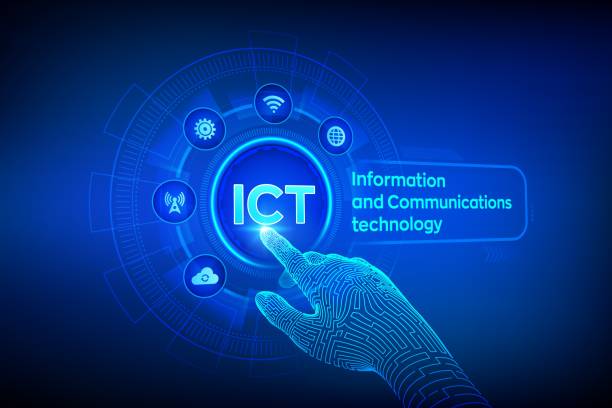Introduction to On-Page SEO and its Importance
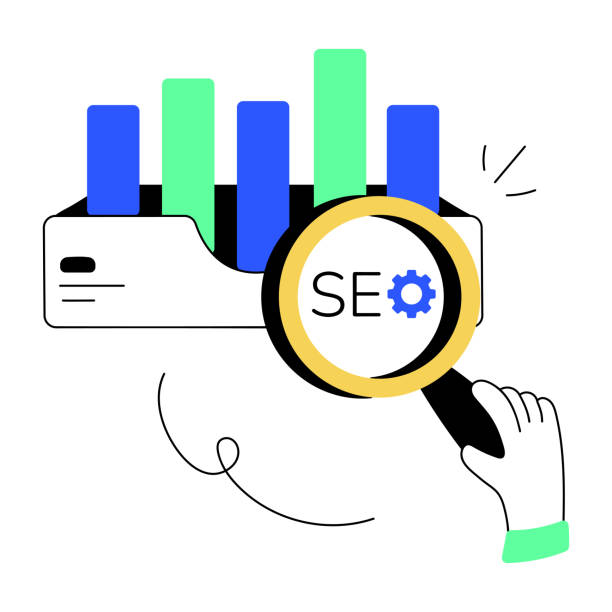
In today’s highly competitive world of the internet, visibility in search engines is of paramount importance.
On-Page SEO, or on-page optimization, is a set of activities performed within your website to improve your pages’ rankings in search results.
This #educational and #explanatory approach helps you maintain complete control over how search engines understand your content.
Unlike off-page SEO, which deals with activities outside the site (like backlinks), on-page SEO focuses on #site_structure, #content, and #internal_technical_factors.
Strong on-page SEO not only helps #improve_your_ranking but also enhances #user_experience (UX) for visitors.
When your content is well-organized and understandable for users and search engine crawlers, you will have a greater chance of attracting organic traffic.
Understanding these foundational principles is the first step to mastering the art of on-page SEO and forms the basis for your long-term success in the digital world.
Are you losing business opportunities because of an outdated website? With Rasawab, solve the problem of not attracting potential customers through your website forever!
✅ Attract more high-quality leads
✅ Increase brand credibility in the eyes of customers
⚡ Get a free consultation for corporate website design
Keywords and their Pivotal Role in On-Page SEO
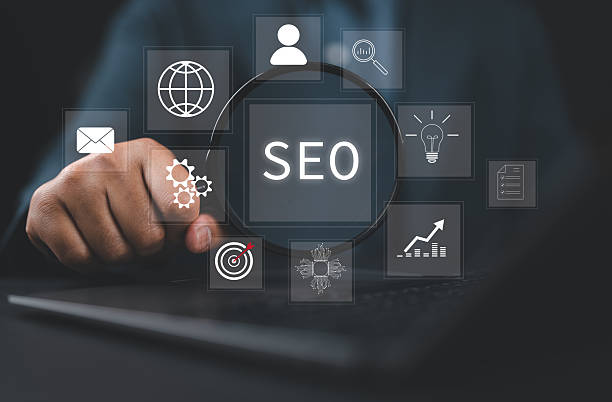
One of the most important foundations of on-page SEO is the correct selection and use of keywords.
The keyword research process, which is considered a #specialized SEO activity, helps you identify the phrases your target audience searches for to find similar content.
These words must be carefully chosen to be both relevant to your topic and have high search potential.
After identifying primary and secondary keywords, it’s time to strategically place them in the page’s content.
This includes using keywords in the page title (Title Tag), meta description (Meta Description), headings (H1, H2, H3), the main body of the content, and even image file names.
It is important to avoid excessive keyword stuffing, as this practice is not only penalized by search engines but also severely degrades user experience.
The main goal is to produce rich, natural content that automatically includes relevant keywords.
Long-tail keywords also play an important role in attracting targeted traffic, as they usually indicate user intent more precisely and have less competition.
A deep understanding of how users search and adapting your content to it is the cornerstone of a successful on-page optimization strategy.
Content Optimization: Techniques and Key Tips
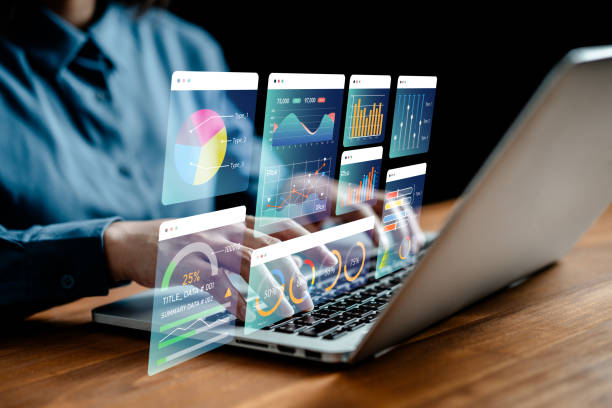
Content is king, and optimizing it within the framework of on-page SEO is one of the most important pillars of your success.
Optimized content is not only more understandable for search engines but also provides a better user experience.
To optimize content, first, ensure that your content is comprehensive, high-quality, and valuable to the audience.
This means providing accurate information, answering user questions, and offering practical solutions.
Appropriate use of headings (H1 to H6) for structuring content is essential; this improves readability and helps search engines identify the main topics of the page.
Naturally, not repetitively, integrating relevant keywords, along with the use of synonym keywords (LSI Keywords) is vital for the semantic richness of the content.
Also, the use of visual elements such as images, videos, and infographics can increase the appeal and interactivity of the content.
Image optimization (such as compression and using alt text) is also important in this section.
Optimized content ensures on-page optimization and helps you stand out in search results.
Your content should answer user questions and provide added value; otherwise, even with the best SEO techniques, you will not achieve the desired results.
This section #guides and #specializes in key optimization tips.
| Content Element | Importance in On-Page SEO | Optimization Tips |
|---|---|---|
| Page Title (Title Tag) | Most important signal for the search engine and the first thing a user sees. | Includes main keyword, short and attractive, less than 60-70 characters. |
| Meta Description | An engaging summary for the user, influencing click-through rate (CTR). | Concise and appealing summary, includes keywords, around 150-160 characters. |
| Headings (H1-H6) | Content structuring, improving readability and identifying main topics. | H1 used only once, includes main keyword, logical and hierarchical. |
| Keyword Density | Indicates content relevance to the keyword, should be natural. | Natural and logical use, not excessive. Use of synonyms. |
| Images | Increasing attractiveness, improving user experience, SEO opportunity. | Compression, use of descriptive Alt Text including keyword. |
URL Structure and Site Information Architecture
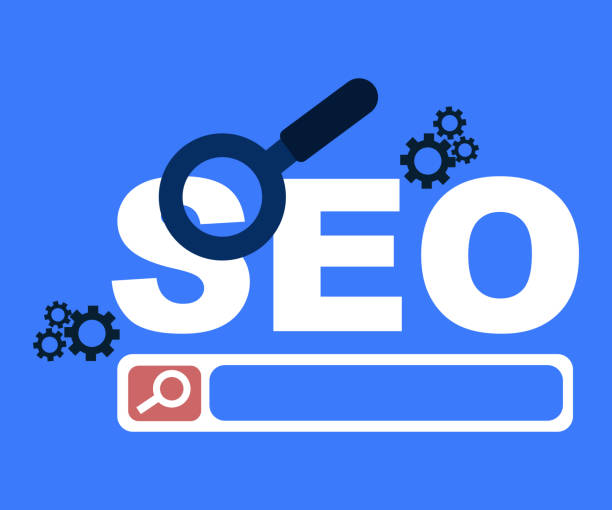
URL structure and site information architecture are two key elements in on-page SEO that are often overlooked.
A clean and logical URL structure not only helps users understand their location on the website but also assists search engine crawlers in discovering and indexing your pages.
Short, descriptive URLs containing relevant keywords perform far better than long, incomprehensible URLs.
Avoid using special characters and meaningless numbers in your URLs, and instead, use hyphens (-) to separate words.
In addition to URLs, the overall site architecture is also of high importance.
A hierarchical and logical structure that moves from the homepage to categories and then to more specific pages signals to search engines which pages are more important.
The use of Breadcrumbs not only helps user navigation but also clearly shows your site structure to search engines.
This #explanatory and #specialized approach in site design is closely related to internal linking, which we will cover in later chapters.
A strong information architecture is the foundation of successful on-page optimization and ensures that no page on your site remains hidden from search engines.
Are you concerned about your e-commerce site’s low conversion rate and not achieving your desired sales?
Rasawab is your specialized solution for a successful e-commerce site.
✅ Significant increase in conversion rate and sales
✅ Professional and user-friendly design to gain customer satisfaction
⚡ Ready for a sales transformation online? Get a free consultation!
Engaging and Effective Title Tags and Meta Descriptions

Title Tags and Meta Descriptions are two fundamental elements in on-page SEO that directly impact the click-through rate (CTR) of your pages in search results.
The title tag is the most important on-page signal for search engines and also the first thing users see in search results.
This tag should be short, include the main keyword of the page, and be appealing to encourage the user to click.
The ideal length for a title tag is usually between 50 and 60 characters.
Meta descriptions, although not directly involved in page ranking, are crucial for attracting clicks.
These descriptions should be an engaging and persuasive summary of the page’s content and include relevant keywords naturally.
A good meta description can show the user that your page is exactly what they are looking for and significantly increase your click-through rate.
This #guidance and #educational section emphasizes the importance of writing unique titles and meta descriptions for each page, as this prevents duplicate content issues and helps search engines properly index each page.
Remember that these two tags are your business card in the world of search; so, take utmost care in optimizing them to ensure your site’s on-page optimization is done in the best possible way.
Internal Linking and Page Authority Improvement
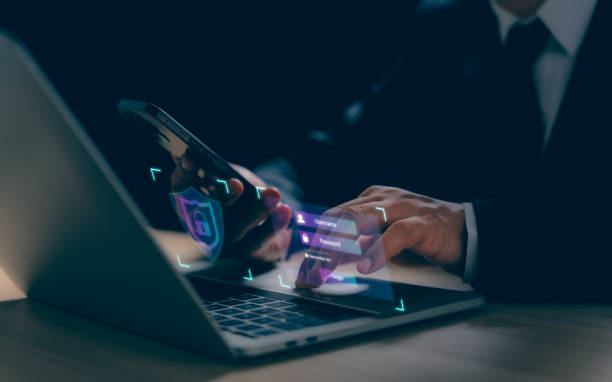
Internal linking is a vital strategy in on-page SEO that helps distribute “link juice” throughout your website and shows the structure and topical relevance of pages to search engines.
Internal links are links that point from one page on your website to another page on the same website.
This not only helps search engine crawlers discover and index all your pages but also distributes ranking power and authority (PageRank) among relevant pages.
Choosing appropriate anchor text that includes relevant keywords is very important in this process.
Anchor text should clearly indicate what the destination page is about.
Also, creating a hierarchical internal linking structure, such as “Siloing,” can help strengthen the topical connection between pages and enable search engines to better understand your specialized content.
More important pages on your site should receive more internal links to increase their authority.
This #specialized and #guidance section shows you how to significantly improve both user experience and the SEO power of your pages with a smart internal linking strategy, strengthening your site’s on-page optimization.
Correct internal linking is like the blood vessels of your site, delivering oxygen to all its parts.
Optimizing Images and Multimedia Files
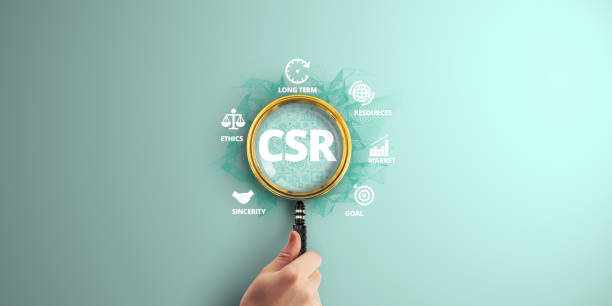
Alongside text content, optimizing images and other multimedia files also plays an important role in on-page SEO.
Images and videos not only increase the visual appeal of pages and improve user experience but can also be valuable traffic sources, especially through image search.
To optimize images, first, you should reduce their file size without significantly compromising visual quality.
Modern formats like WebP can help with this.
Then, the use of descriptive and keyword-relevant Alt Text for each image is essential.
Alt Text helps search engines understand the image content and provides information for visually impaired users.
Naming image files descriptively (e.g., `keyword-description.jpg` instead of `IMG001.jpg`) is also of high importance.
For videos, in addition to optimizing file names and descriptions, you can use video schema markup to help search engines get more information about your video content.
This #educational and #specialized section helps you utilize all the visual potential of your site to improve rankings and attract more traffic, making your on-page optimization more complete.
| Image Optimization Element | Importance in On-Page SEO | Recommendations |
|---|---|---|
| Image File Size | Directly impacts page load speed and user experience. | Compress images without quality loss, use optimized formats (WebP). |
| Alt Text | Describes the image for search engines and visually impaired users. | Descriptive and accurate, contains relevant keywords, short and useful. |
| Image File Name | A signal to the search engine about the image content. | Use keywords, descriptive naming (e.g., “on-page-seo-chart.jpg”). |
| Image Dimensions | Prevents resizing by the browser, improves rendering. | Specify exact image dimensions in HTML/CSS code. |
| Image Caption | Increases readability and understanding of image content for the user. | Add short and relevant descriptions below the image. |
Website Speed and User Experience (Core Web Vitals)

Website speed and user experience, as vital factors in on-page SEO and Google’s ranking, have gained double importance, especially with the introduction of Core Web Vitals.
Google consistently emphasizes providing the best user experience, and page load speed is one of the most important components of this experience.
Core Web Vitals introduced three main metrics for measuring user experience: LCP (Largest Contentful Paint) for load speed, FID (First Input Delay) for interactivity, and CLS (Cumulative Layout Shift) for visual stability.
Improving these metrics not only helps you achieve higher rankings in search results but also keeps users satisfied and reduces bounce rate.
Actions such as compressing images and CSS/JavaScript files, using caching, optimizing code, and choosing appropriate hosting can help improve your site’s speed.
This #analytical and #informative approach emphasizes that site speed is no longer a competitive advantage, but a necessity for any website seeking success in the digital world and improving its on-page optimization.
Ignoring these factors can lead to loss of traffic and ranking.
Are you tired of your company’s website not getting the visibility it deserves and losing potential customers? Solve this problem forever with professional and effective website design by Rasawab!
✅ Increase brand credibility and gain customer trust
✅ Attract targeted sales leads
⚡ Contact us now for a free consultation!
Advanced Tips and Specific Techniques in On-Page SEO

After mastering the basic principles, it’s time for #specialized and #analytical techniques in on-page SEO that can take your website a step further.
One such technique is the use of structured schema markup.
Schema helps search engines better understand your content and display it more attractively in search results (Rich Snippets), which in turn helps increase CTR.
There are different types of schema, such as schema for products, events, frequently asked questions (FAQ), and articles.
Another point is managing duplicate content.
Duplicate content can harm your site’s SEO; to prevent this problem, you can use the Canonical Tag to tell search engines which version of the page, the main one, is.
Managing pages with low-quality content or “Thin Content” is also important; these pages should be improved, deleted, or merged with other pages.
For large sites, correct pagination implementation and the use of `next` and `prev` tags (although Google no longer uses these tags as an indexing signal, they are still useful for user navigation) are essential for managing archive pages.
This section also raises #advanced_topics, such as how to deal with old pages that have lost their traffic, or how to optimize for voice search.
On-page optimization at advanced levels requires precision and a deeper understanding of algorithms and SEO trends.
Monitoring and Analysis of On-Page SEO Performance
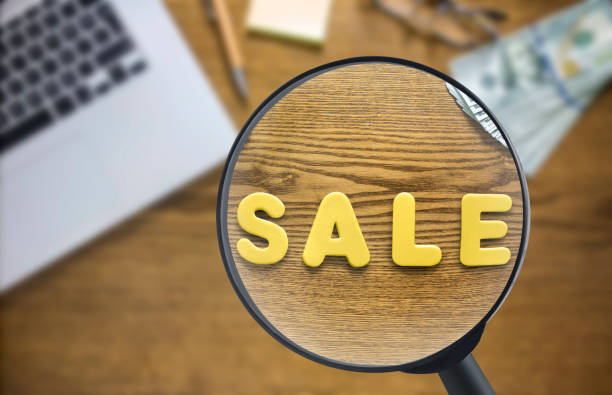
Last but not least in the on-page SEO strategy is continuous monitoring and performance analysis.
Without careful tracking of results, you cannot understand which strategies have been effective and which need improvement.
Tools like Google Analytics and Google Search Console are essential.
Google Search Console provides valuable information about how your site is seen in search results, the keywords you’ve ranked for, indexing issues, and backlinks.
Google Analytics provides detailed insights into user behavior on your site, such as the number of visitors, time spent on page, bounce rate, and navigation paths.
By analyzing this data, you can identify the strengths and weaknesses of your on-page optimization strategy and make data-driven decisions.
This #analytical and #guidance process allows you to continuously improve your on-page SEO strategy and keep up with changes in search engine algorithms.
Periodic reports and setting alerts for sudden changes in traffic or rankings help you react quickly to potential issues.
SEO is an ongoing process, and regular monitoring is key to your sustained success in the world of website optimization.
Frequently Asked Questions
| Row | Question | Answer |
|---|---|---|
| 1 | What is On-Page SEO? | On-page SEO refers to a set of actions performed within a website (on its pages) to improve the site’s ranking in search engine results. This includes optimizing content, site structure, and HTML codes. |
| 2 | Why is On-Page SEO important? | On-page SEO helps search engines better understand page content and determine whether that page is relevant and valuable for user queries. This better understanding leads to higher rankings. |
| 3 | What is the first and most important step in On-Page SEO? | Keyword Research is the most important initial step. By finding suitable keywords, targeted content relevant to user needs can be produced. |
| 4 | What is the role of the Title Tag in On-Page SEO? | The title tag is one of the most important ranking factors and should include the main keyword. This tag is displayed as the page title in search results and influences the click-through rate (CTR). |
| 5 | What is the importance of Meta Description? | Meta description does not directly impact ranking, but by providing an attractive summary of the page content in search results, it can encourage users to click, thereby increasing the click-through rate (CTR). |
| 6 | Why is using headings (H1, H2, etc.) important in content? | Headings help structure content and improve readability for users and search engine crawlers. Using keywords in headings also helps search engines better understand the topic. |
| 7 | What does Image Optimization in On-Page SEO include? | It includes compressing images to reduce size, using descriptive and relevant file names, and filling the Alt tag (alternative text) with relevant keywords to help search engines understand image content. |
| 8 | What is Internal Linking in On-Page SEO? | Internal linking refers to creating links between different pages of a website. This helps distribute page authority (Link Equity), improve user experience, and assist search engine crawlers in discovering new pages. |
| 9 | Why is Page Speed important for On-Page SEO? | Page load speed is a direct ranking factor and greatly affects user experience. Slow pages can lead to increased bounce rate (Bounce Rate) and reduced user engagement. |
| 10 | What role does quality content play in On-Page SEO? | High-quality, comprehensive, unique, and valuable content for the user, is the core of on-page SEO. This content not only attracts and retains users but also sends positive signals to search engines and helps achieve better rankings. |
Other Services of Rasa Web Advertising Agency in Advertising:
Smart SEO: A specialized service for increasing website traffic growth based on intelligent data analysis.
Smart Sales Automation: Transform SEO ranking improvement with the help of attractive UI design.
Smart Conversion Rate Optimization: A fast and efficient solution for digital branding with a focus on SEO-driven content strategy.
Smart Social Media: A professional solution for analyzing customer behavior with a focus on intelligent data analysis.
Smart Link Building: A specialized service for increasing click-through rate growth based on user experience customization.
And over hundreds of other services in the field of internet advertising, advertising consultation, and organizational solutions.
Internet Advertising | Advertising Strategy | Advertorial
Resources
On-Page SEO TrainingWebsite Optimization ReferencePersian SEO MagazineSpecialized SEO Webinar
? To elevate your business in the digital world and reach the pinnacles of success, Rasaweb Afarin Digital Marketing Agency is by your side with innovative services including website design with a modern user interface, SEO, and management of advertising campaigns, to ensure a powerful and lasting presence in the online space.
📍 Tehran, Mirdamad Street, next to Bank Markazi, Southern Kazeroon Alley, Ramin Alley, No. 6

